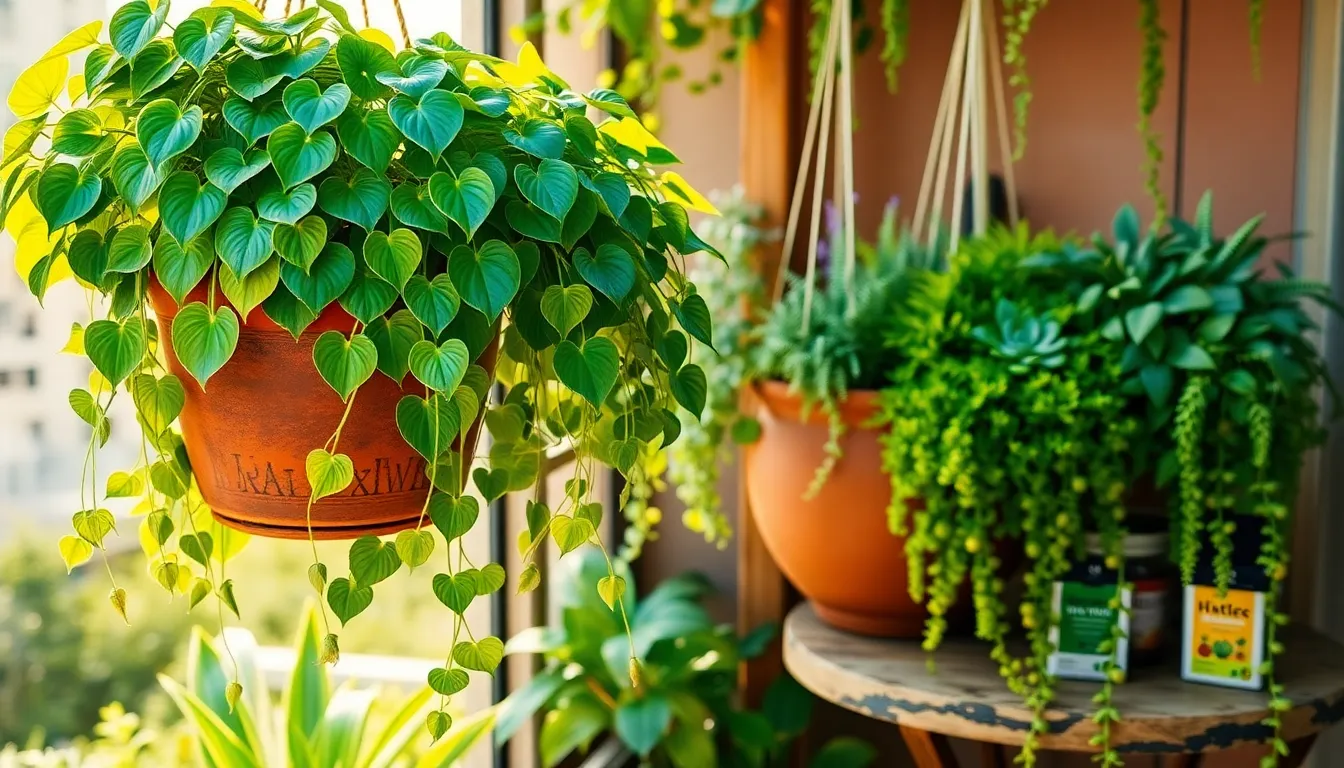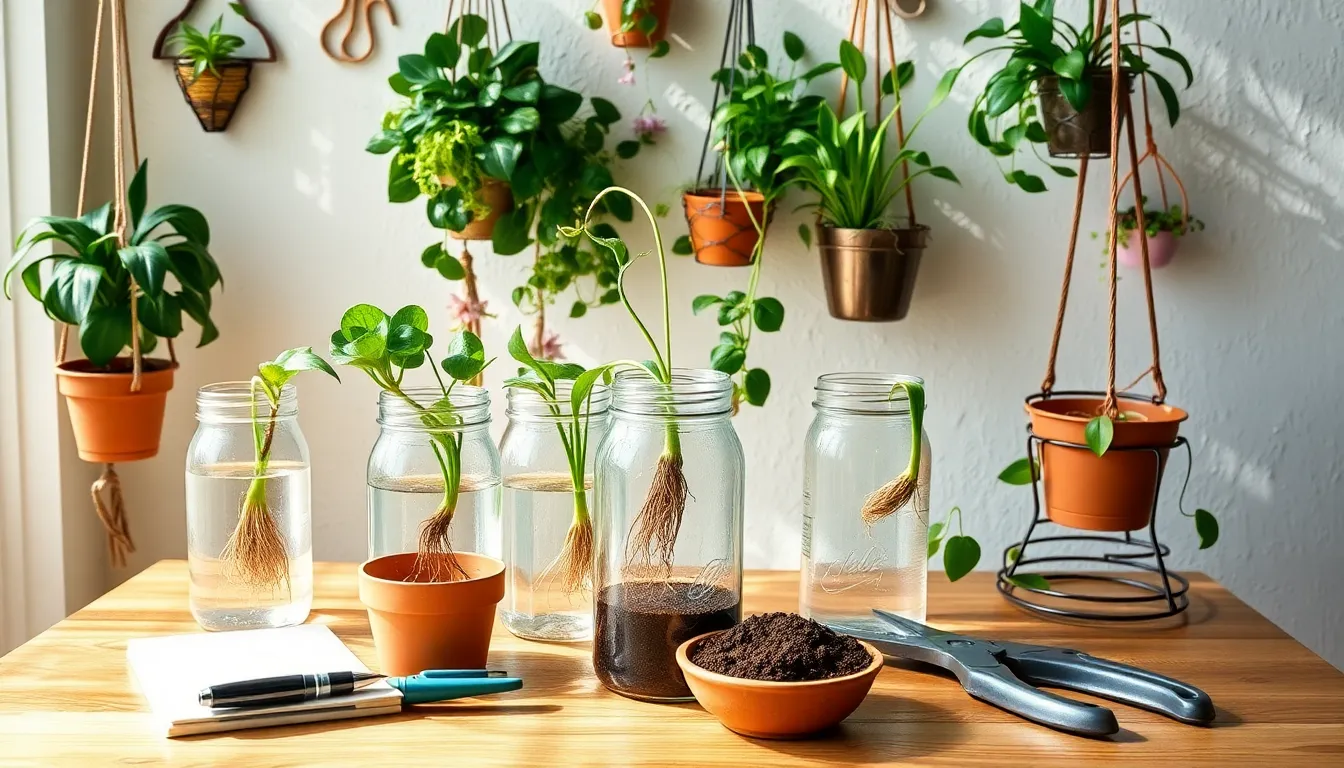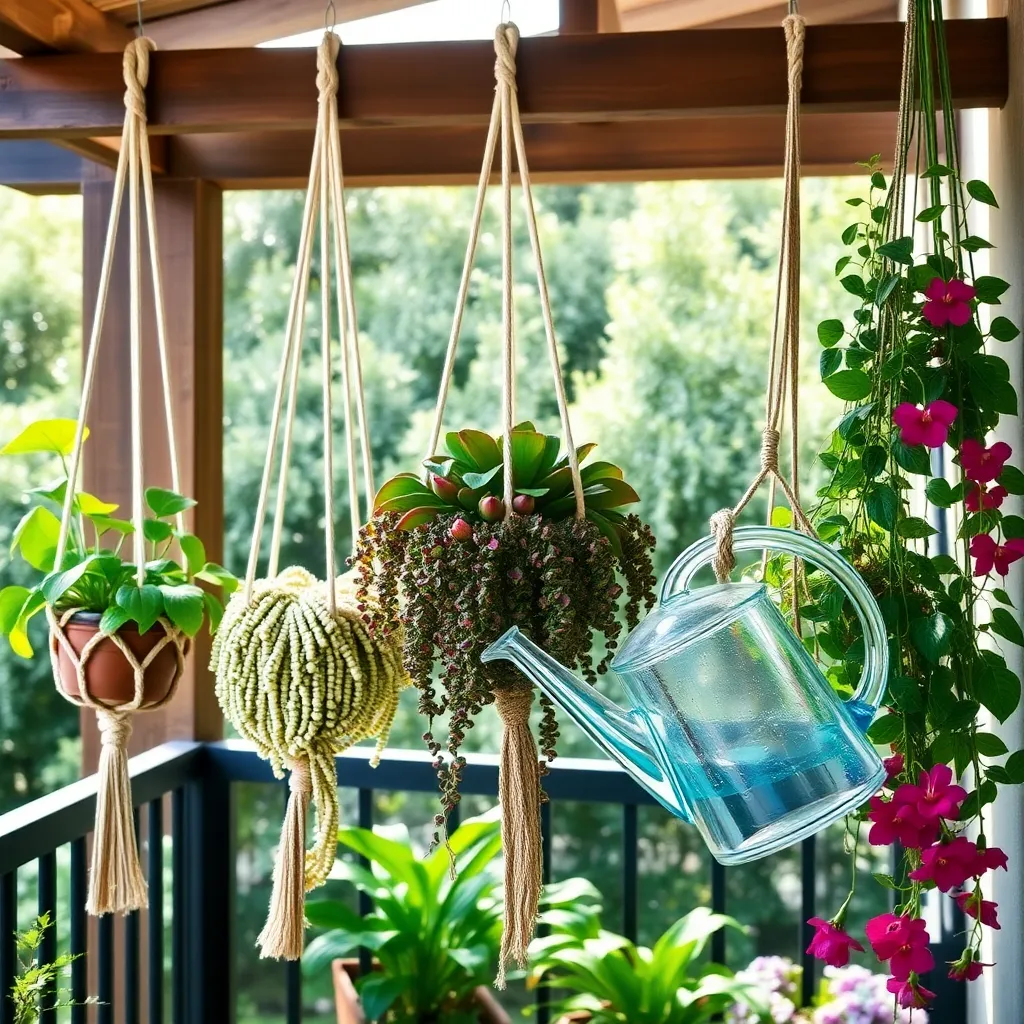In the delightful world of gardening, where creativity meets nature, small spaces should never limit your green dreams. Hanging plants offer an ingenious solution, transforming tight corners and narrow balconies into lush, vibrant havens. Whether you’re nurturing your first plant or are already a seasoned gardener, the charm of these suspended beauties can bring a fresh dimension to your home. They not only save precious floor space but also add a cascading elegance that draws the eye upward, creating a sense of airy openness.
With the right selection, hanging plants can thrive even in modest environments, offering color and life where you least expect it. This article will guide you through 13 stunning options, each suited to the unique challenges of small-space gardening. More than just a list, you’ll discover practical tips tailored to both novices and experts, ensuring each plant finds its perfect hanging spot in your home. From choosing the right species to understanding their care needs, you’ll gain the confidence to elevate any space with these verdant wonders.
Prepare to embark on a journey that blends beauty with practicality, as we explore the best hanging plants for compact areas. You’ll learn how to match plants with lighting conditions, watering routines, and aesthetic desires, making your gardening experience both rewarding and manageable. Whether you’re aiming to create a personal oasis or simply add a touch of nature to your indoor landscape, this guide promises to inspire and inform, helping you cultivate a home that flourishes from every angle. Together, let’s unlock the potential of your small spaces and celebrate the joy that hanging plants can bring.
Why Choose Hanging Plants?

Hanging plants are an excellent choice for adding greenery without taking up valuable floor space. They allow you to utilize vertical areas, making them perfect for small spaces like apartments or patios.
One of the most practical aspects of hanging plants is the ease of maintenance. They often require less frequent watering because they are positioned where air circulation is better, reducing moisture retention in the soil.
For beginners, selecting hardy species like pothos or spider plants can be a great start, as they are forgiving and adapt well to various light conditions. Both plants thrive in well-draining soil, such as a mix of peat moss and perlite, ensuring roots are not waterlogged.
More advanced gardeners might explore varieties like string of pearls or ferns, which can add an elegant touch to any room. These plants require a bit more attention, such as regular misting or placing them in slightly humid environments to keep them lush and vibrant.
Maximizing Small Spaces with Greenery
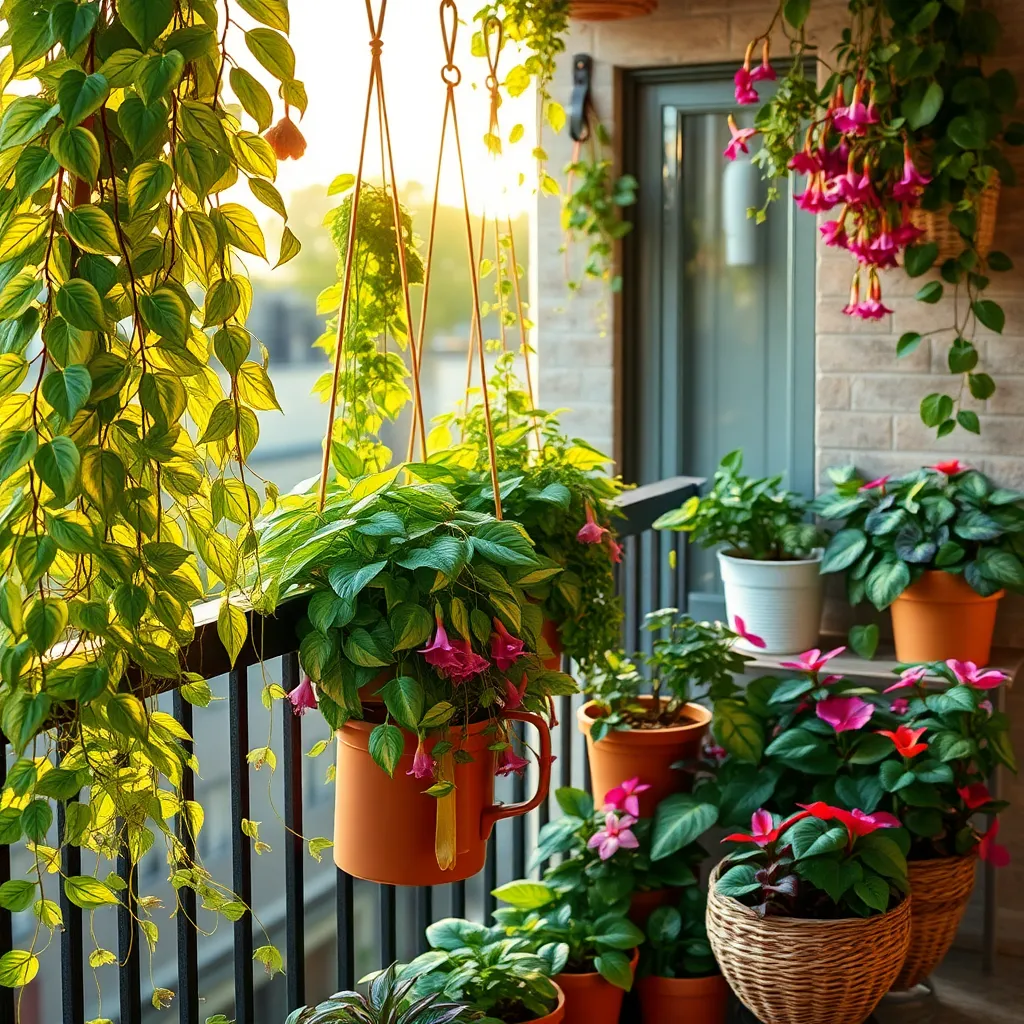
Utilizing vertical space with hanging plants is an effective way to introduce greenery into small areas without cluttering your living environment. Consider using plant hooks or wall-mounted brackets to suspend your pots, allowing you to maximize floor space while still enjoying lush foliage.
When selecting plants, choose species that thrive in indirect light, such as the adaptable pothos or the resilient spider plant. These plants are not only easy to care for but also help purify the air, making them ideal for indoor settings where space might be limited.
To ensure healthy growth, it’s crucial to pay attention to watering needs, as hanging plants can dry out more quickly than their grounded counterparts. Use a well-draining potting mix and water until you see excess draining from the bottom, which helps prevent root rot.
For more advanced gardeners, consider incorporating a self-watering system into your hanging arrangements. These systems can be as simple as a water reservoir at the base of the pot or a more intricate setup that regulates moisture levels, which reduces maintenance and supports thriving plants.
Explore creative ways to display your hanging plants, such as using macramé hangers or repurposed items like wicker baskets. These methods not only enhance the aesthetic appeal of your space but also provide additional ventilation around the plant, promoting healthier growth.
Understanding Light Needs for Hanging Plants

Understanding the light needs of your hanging plants is crucial for their health and vitality. Different plants have varying requirements, ranging from full sun to partial shade, so it’s important to match your plant selection to the natural light available in your space.
For beginners, it’s helpful to start by observing the light conditions throughout the day in the area where you plan to hang your plants. Take note of how many hours of direct sunlight the space receives, as this will guide you in choosing the right plant species.
If your space gets bright, indirect light, consider plants like the spider plant or pothos, which thrive in these conditions. These plants are also forgiving of occasional neglect, making them ideal for new gardeners looking to gain confidence.
More experienced gardeners might explore plants that require specific lighting, such as orchids or ferns, which often prefer filtered or diffused light. Invest in sheer curtains or place them near north-facing windows to replicate their natural habitat conditions.
For those with low-light areas, options such as the ZZ plant or heartleaf philodendron can be excellent choices. These plants not only tolerate but actually thrive in low-light environments, and they offer lush foliage to brighten up any small space.
Lastly, remember to rotate your hanging plants every few weeks to ensure even growth and prevent them from leaning towards the light source. This simple practice helps maintain an attractive and balanced appearance while also promoting overall plant health.
Perfect Hanging Pots for Small Areas
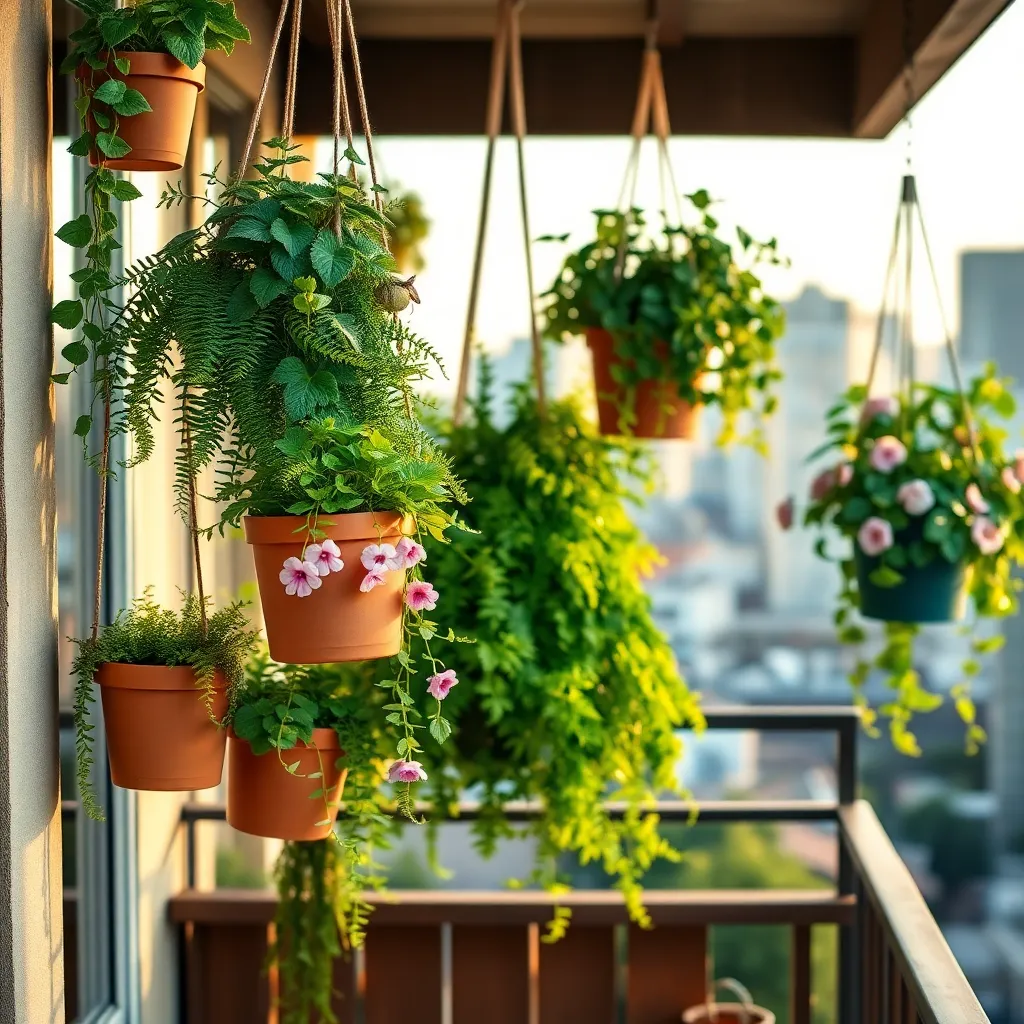
When space is limited, choosing the right hanging pots can make all the difference in your gardening success. Opt for lightweight, durable materials like plastic or fiberglass to ensure your pots are easy to hang and handle.
Consider pots with built-in drainage holes to prevent waterlogging, which is crucial for plant health. For small areas, select pots with a compact design that can fit snugly into corners or narrow spaces, maximizing your planting potential.
Using coco coir or peat-based potting mixes can enhance water retention in your hanging pots, maintaining consistent moisture levels. Ensure that your chosen potting mix is well-draining to avoid root rot, a common issue with hanging plants.
For added stability, choose hanging pots with sturdy hooks or chains that can withstand windy conditions. Regularly check the integrity of the hanging mechanisms to ensure your plants remain secure, especially after storms or high winds.
Choosing Low-Maintenance Varieties

When selecting low-maintenance varieties for your hanging plants, consider those that thrive on minimal care. Succulents like String of Pearls are perfect choices as they require infrequent watering and are highly drought-tolerant.
Another excellent option is the Spider Plant, known for its resilience and ability to thrive in a variety of light conditions. Water them moderately and ensure the soil is well-draining to prevent root rot.
For those who prefer flowering plants, the Trailing Petunia can be a stunning addition to your collection. These plants love sunlight and need regular deadheading to encourage continuous blooming, but they are otherwise quite self-sufficient.
To keep your hanging plants looking lush with minimal effort, choose a lightweight potting soil that retains moisture without becoming waterlogged. A good mix might include perlite or sand to aid in drainage and aeration.
Incorporate a slow-release fertilizer into the soil mix at the start of the growing season to provide a steady supply of nutrients. This eliminates the need for frequent feeding and supports healthy growth with less hassle.
Finally, consider using self-watering hanging pots to further reduce maintenance. These pots help regulate moisture levels, making it easier to keep your plants hydrated even during busy weeks or hot weather.
Vibrant Trailing Vines for Charm
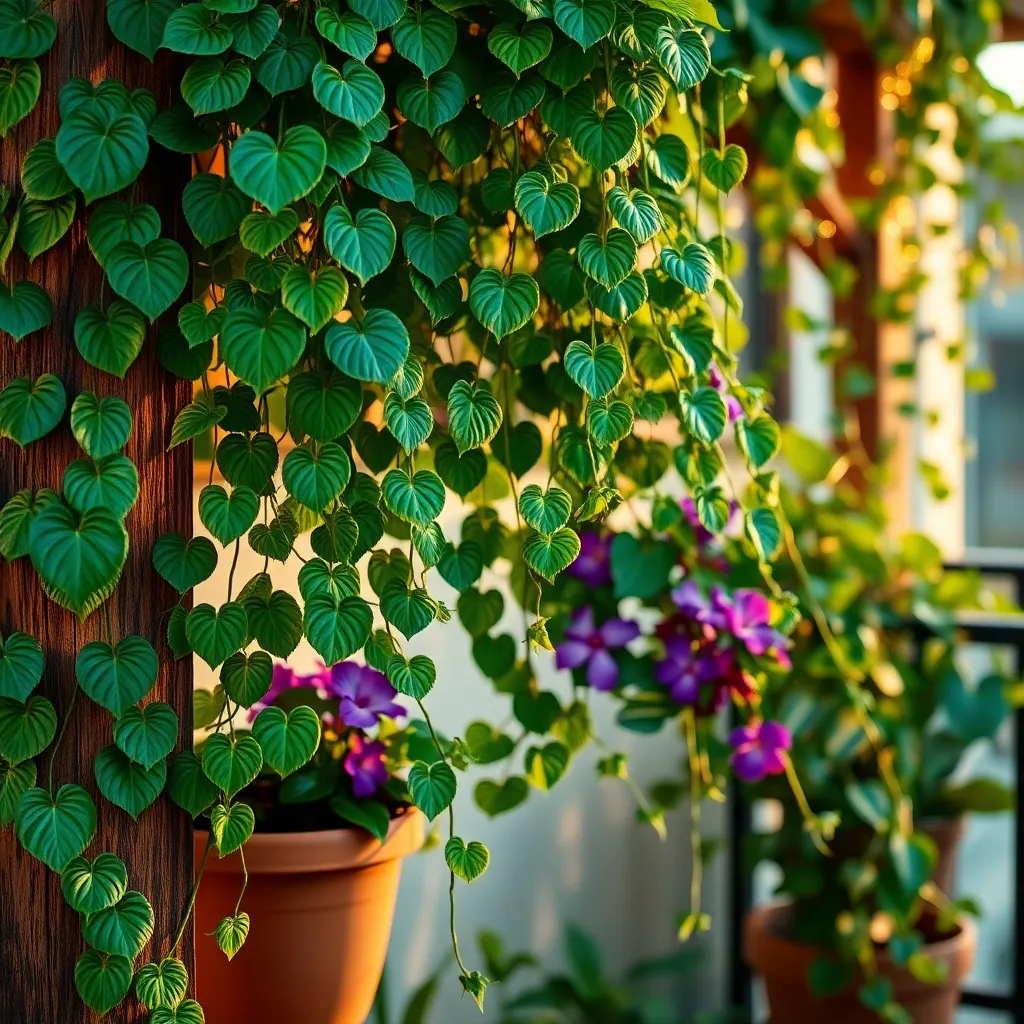
Trailing vines can bring a touch of charm to any small space, making them perfect for hanging baskets. Consider using English Ivy (Hedera helix), which is known for its ability to thrive in both bright, indirect light and shadier spots. This vine is an excellent choice for beginners, as it requires only moderate watering; simply allow the top inch of soil to dry out between waterings.
If you’re looking for something more colorful, the String of Hearts (Ceropegia woodii) offers a stunning display with its delicate, heart-shaped leaves. To keep this plant happy, place it in a spot with bright but indirect light and use a well-draining soil mix, such as a cactus or succulent blend. Water sparingly, as the String of Hearts is drought-tolerant and prefers its soil to dry out completely between waterings.
For those wanting a fast-growing option, the Golden Pothos (Epipremnum aureum) is an ideal candidate. It thrives in a variety of light conditions, though it prefers bright, indirect light for optimal growth. Regular pruning will encourage bushier growth, and feeding it with a balanced liquid fertilizer every few months can enhance its vibrancy. Ensure the soil is kept moist but not waterlogged, as overwatering can lead to root rot.
More advanced gardeners might enjoy experimenting with the Black-Eyed Susan Vine (Thunbergia alata), which provides a burst of color with its bright flowers. This plant prefers full sun and well-drained soil, and it benefits from regular watering to keep the soil consistently moist. For a lush display, train the vines to cascade over the edges of your basket or trellis, and pinch back growth to encourage branching.
Compact Ferns for Lush Appeal
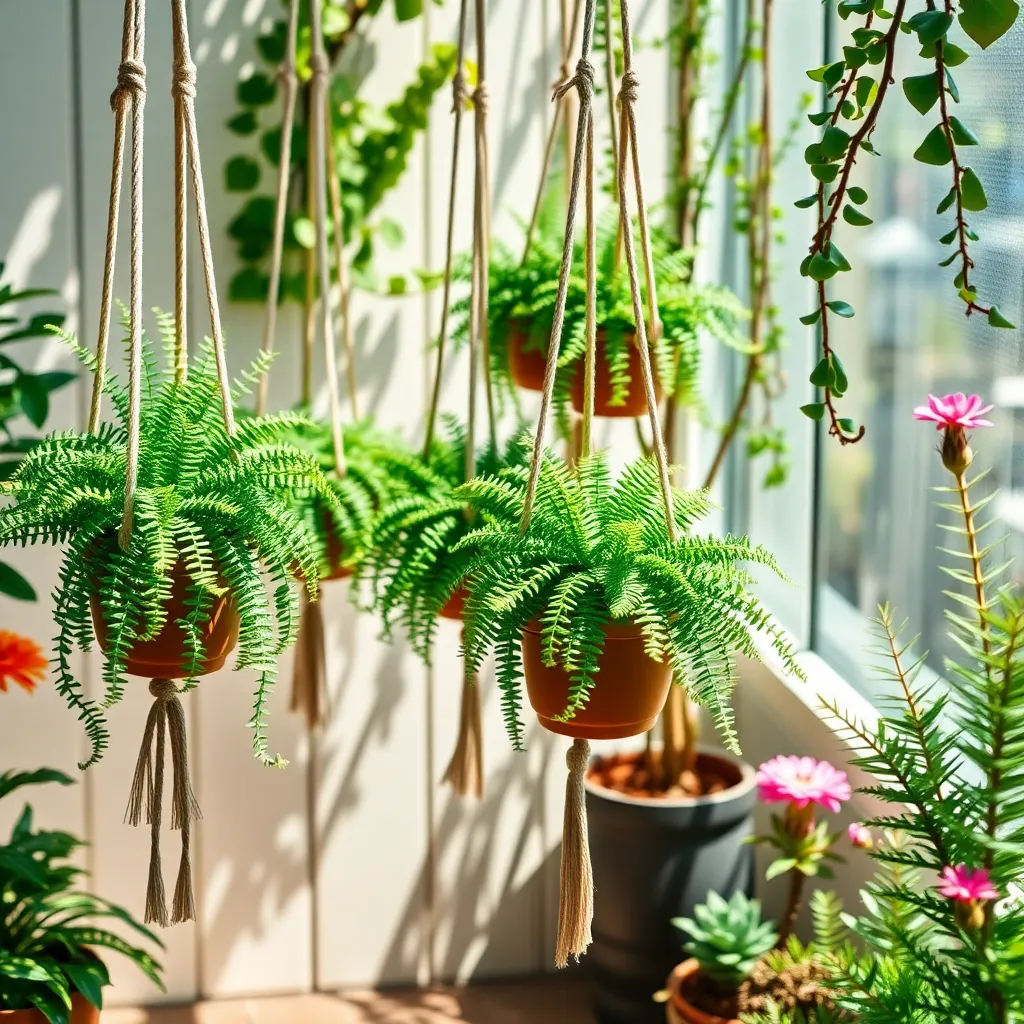
Compact ferns offer a lush, verdant appeal that can transform any small space into a green oasis. They thrive particularly well in hanging baskets, where their fronds can elegantly cascade over the edges, creating a soft, natural look.
For successful growth, ensure that your ferns are placed in a spot with indirect light, as direct sunlight can scorch their delicate leaves. A north or east-facing window is ideal, providing the filtered light they crave without overwhelming their sensitive fronds.
When it comes to soil, choose a well-draining potting mix rich in organic matter to support their roots. You can enhance the soil by mixing in a small amount of peat moss or coco coir, which helps retain moisture while preventing waterlogging.
Watering is crucial for compact ferns, as they require consistently moist soil. It’s best to water them when the top inch of soil feels dry, ensuring you don’t let them sit in water, as this can lead to root rot.
For a more advanced tip, consider misting your ferns regularly to increase humidity, especially during dry months. Alternatively, you can place a small humidifier nearby or use a pebble tray to maintain the humidity levels these ferns love.
Colorful Blooms in Hanging Baskets

Hanging baskets offer a wonderful opportunity to add vibrant colors to small spaces. Choose plants like petunias and geraniums, which are known for their long-lasting blooms and ability to thrive in confined areas.
It’s important to select a well-draining potting mix to ensure healthy growth. A mix that includes peat moss and perlite can help maintain moisture while preventing root rot, crucial for hanging baskets.
When watering your hanging baskets, aim to keep the soil consistently moist but not soggy. Depending on the climate, this typically means watering every day during hot spells or every other day in cooler weather.
To keep blooms vibrant, apply a balanced liquid fertilizer every two weeks. This will provide the necessary nutrients for continuous flowering and robust plant health.
For gardeners looking for a more advanced tip, consider deadheading spent flowers regularly. This encourages new blooms and keeps your baskets looking fresh throughout the growing season.
Succulents: Space-Saving Wonders
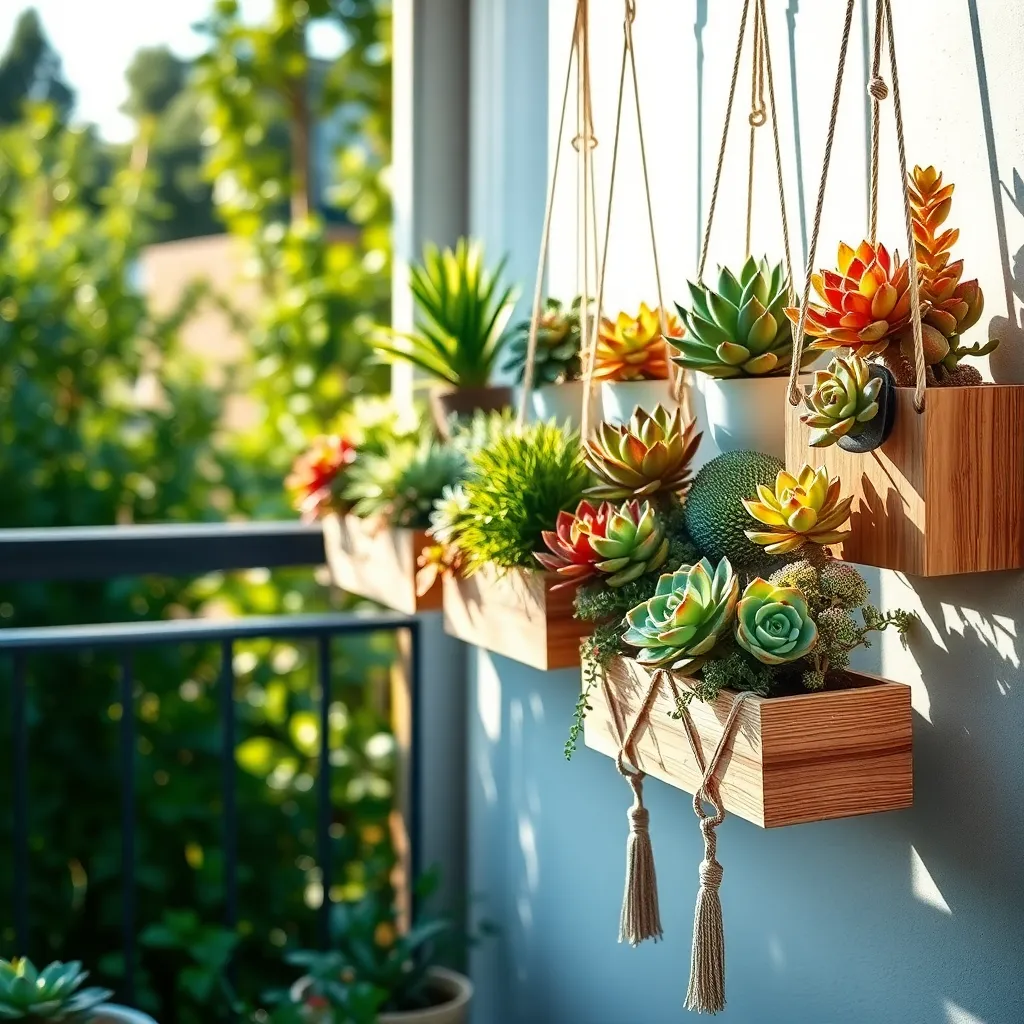
Succulents are an excellent choice for small spaces due to their compact size and low maintenance requirements. These resilient plants thrive in hanging baskets, making them perfect for adding a touch of greenery to your living area without taking up floor space.
For successful succulent care, use a well-draining potting mix, preferably one formulated specifically for cacti and succulents. Water sparingly, allowing the soil to dry out completely between waterings to prevent root rot, which is a common issue with overwatering.
Position your hanging succulents in a spot where they can receive bright, indirect light. Direct sunlight can scorch their leaves, so it’s important to find a balance to maintain their vibrant appearance and health.
Advanced gardeners might consider experimenting with different succulent varieties to create visually appealing arrangements. Combine succulents with varying leaf shapes and colors to add interest and diversity to your hanging displays.
Herbs that Thrive in Hanging Gardens

Hanging gardens offer a unique opportunity to grow herbs even in the smallest of spaces. Basil is a fantastic choice for hanging arrangements, particularly because of its compact growth and aromatic leaves. Ensure the potting mix is light and well-draining, and water it when the top inch of soil feels dry. Regularly harvesting the leaves will not only keep the plant bushy but also provide you with fresh herbs for your kitchen.
Thyme is another herb that thrives in hanging gardens, thanks to its trailing nature and drought resistance. This herb prefers a sunny spot with at least six hours of direct sunlight each day. Use a sandy, well-draining soil mix, and be cautious not to overwater it, as thyme prefers dry conditions. For more advanced gardeners, experimenting with different thyme varieties like lemon thyme can add unique flavors and aesthetics to your garden.
For those looking to add a pop of color and fragrance, lavender is an ideal choice for a hanging garden. This Mediterranean herb loves full sun and thrives in a slightly alkaline, well-drained soil. Water it deeply but infrequently to mimic its natural arid conditions, ensuring the soil dries out between waterings. Prune lavender regularly to encourage new growth and maintain a compact shape, which is particularly beneficial in a hanging setup.
Finally, consider growing oregano in your hanging garden for a hardy, resilient herb that offers a burst of flavor. Oregano does best in a pot with good drainage and a sunlight-rich location. Use a mix of potting soil and perlite to prevent waterlogging and encourage healthy root development. Harvest the leaves before the plant flowers for the best flavor, and pinch back the stems to promote a bushy growth habit.
Caring for Your Hanging Plants
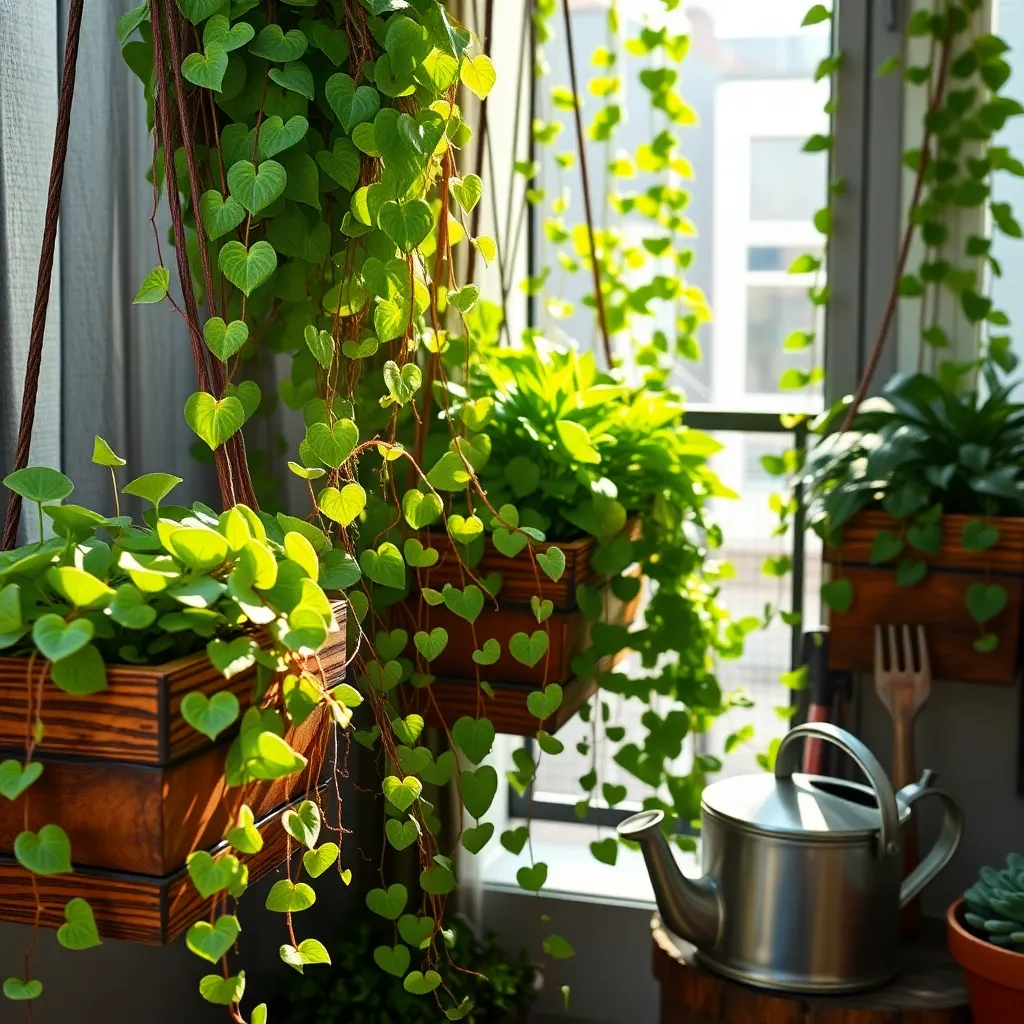
Hanging plants require special attention to ensure they thrive in their elevated homes. Begin by selecting a lightweight potting mix that promotes good drainage to prevent root rot, which is common in hanging containers.
Watering is crucial, but overwatering can be detrimental. Check the soil moisture by sticking your finger about an inch deep into the soil; if it feels dry, it’s time to water, ensuring the water drains completely.
Light requirements vary, so observe the specific needs of your chosen plant. Most hanging plants benefit from bright, indirect light, but it’s important to adjust their position seasonally to maintain optimal light exposure.
Regular feeding is essential to support healthy growth, especially since nutrients can quickly leach out of the soil in hanging baskets. Use a balanced, water-soluble fertilizer every two to four weeks during the growing season for best results.
Pest Management in Small Spaces
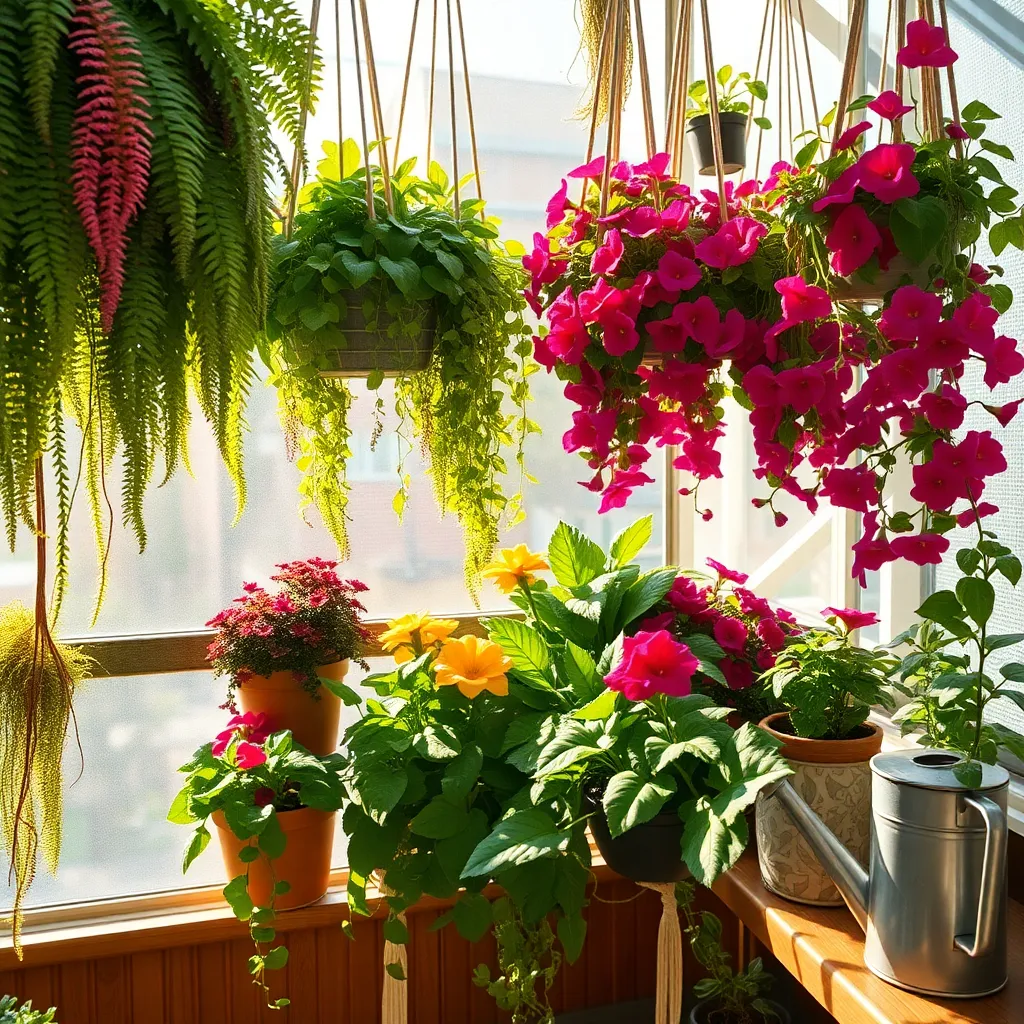
Managing pests in small spaces requires a bit of creativity and vigilance. Regularly inspect your hanging plants to catch any infestations early before they become a major issue.
Integrated Pest Management (IPM) is a practical approach to dealing with pests. This method involves a combination of techniques such as cultural practices, mechanical controls, and biological methods to keep pest populations under control.
For beginner gardeners, a simple way to start is by using natural deterrents like neem oil or insecticidal soap. These solutions are easy to apply and effective against a wide range of common pests.
Experienced gardeners might consider introducing beneficial insects like ladybugs or lacewings to their indoor gardens. These natural predators can effectively reduce pest numbers without the need for chemical interventions.
Maintaining cleanliness is crucial in small spaces to prevent pest problems. Ensure that fallen leaves and debris are regularly removed, as they can harbor pests and disease.
Additionally, proper watering techniques help in keeping your plants healthy and less susceptible to infestations. Overwatering can lead to root rot and create an environment conducive to pests, so it’s important to let the soil dry slightly between waterings.
For those dealing with a serious pest issue, a more advanced technique involves creating a homemade garlic spray. Blend a few cloves of garlic with water, strain the mixture, and use it as a spray to repel pests naturally.
Ultimately, a proactive approach combined with consistent monitoring will ensure that your hanging plants thrive pest-free in any small space. Implementing these strategies will not only protect your plants but also enhance your overall gardening experience.
Creative Display Ideas for Small Areas
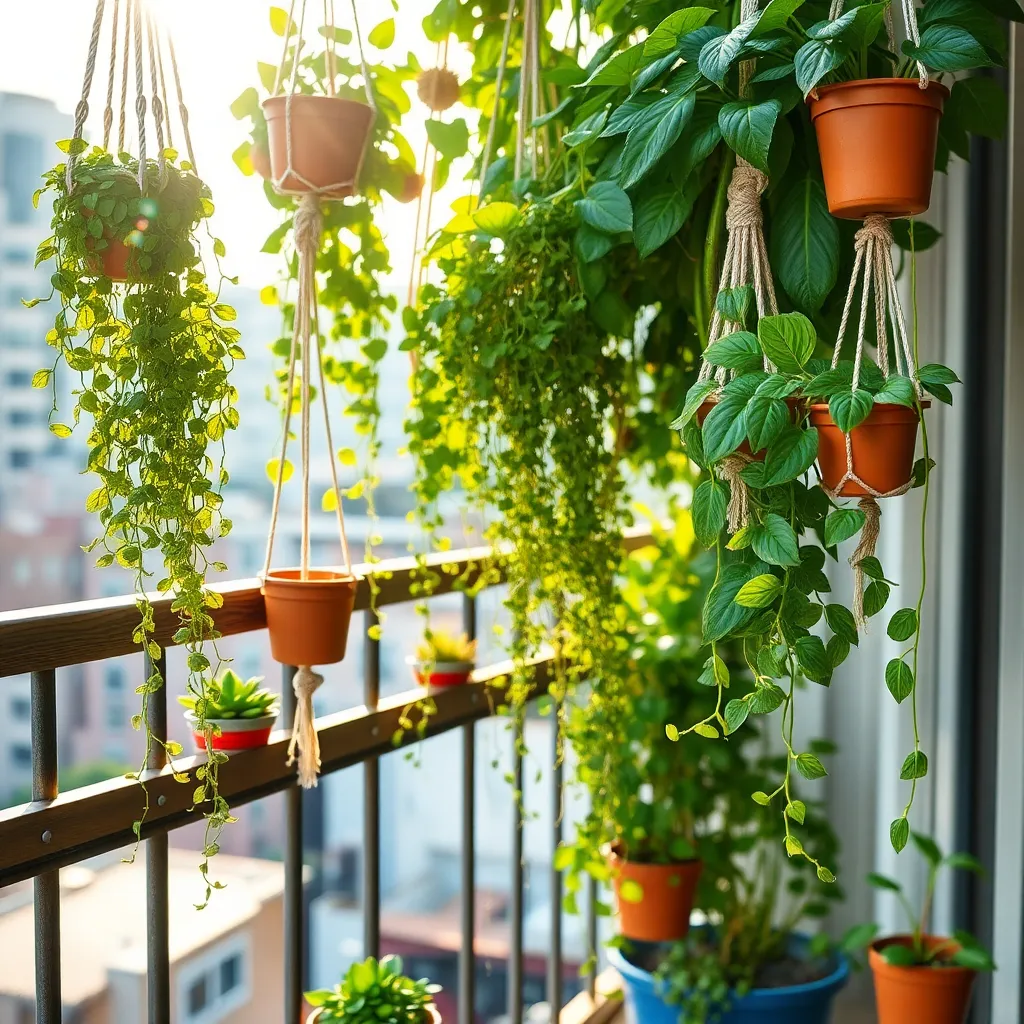
Utilizing vertical space is an excellent strategy for small areas, allowing you to include more plants without cluttering your space. Consider hanging planters or wall-mounted baskets, which not only save floor space but also add a layer of visual interest to your garden.
For a creative touch, try a tiered hanging system where multiple plants can grow at various heights. This can be easily achieved by using a sturdy rod or tension wire to suspend pots at differing levels, creating a cascading green display.
Incorporating repurposed materials can add charm and sustainability to your garden. Old ladders or wooden pallets make great frameworks for attaching pots or even container shelves, offering a rustic yet functional approach to vertical gardening.
Choose containers with proper drainage to ensure your hanging plants thrive, as poor drainage can lead to root rot. Opt for lightweight materials like plastic or fabric pots to reduce stress on your hooks and ensure easy repositioning as needed.
Conclusion: Growing Success with These Plants
As we explored the vibrant world of hanging plants, we uncovered 13 key relationship concepts that mirror the nurturing care required for both flora and love to flourish in small spaces. From the resilience of the Spider Plant to the adaptability of the English Ivy, each plant symbolizes a unique aspect of relationships—communication, trust, flexibility, and growth. Just as these plants bring life to confined areas, these principles breathe vitality into our connections, reminding us that even in limited spaces, relationships can thrive when attentively nurtured.
Now, it’s time to take action. Choose one relationship aspect represented by your favorite plant and focus on enhancing it this week. Whether it’s improving communication or embracing change, small, consistent efforts can lead to significant growth in your relationships.
As you embark on this journey, remember to bookmark or save this article for a constant source of inspiration and guidance. Let these insights be your companion in cultivating a garden of love that thrives against all odds. By integrating these principles, you’re stepping into a future where your relationships are not just surviving but truly flourishing. Embrace these nurturing qualities and watch your connections deepen with every mindful action.


